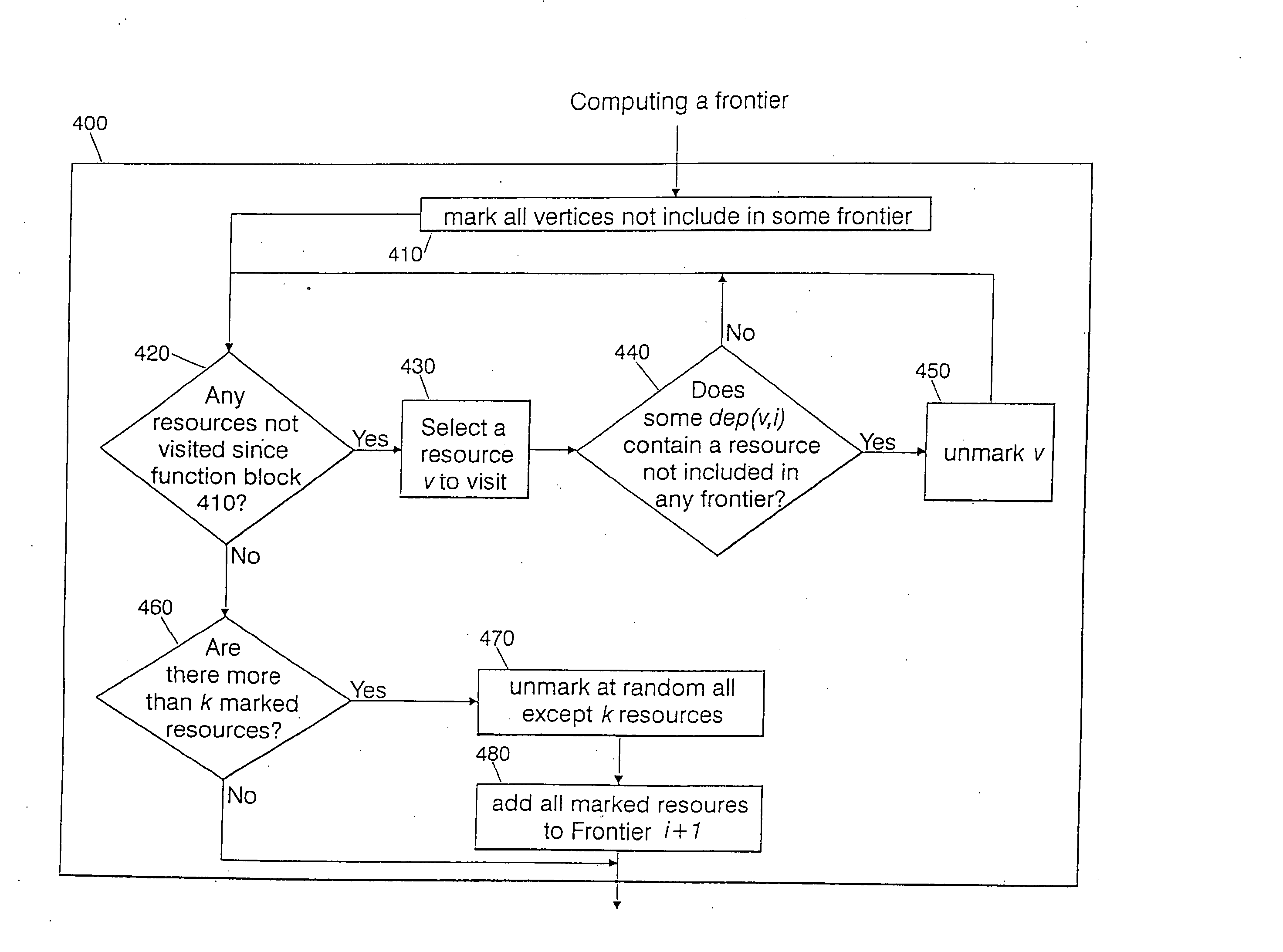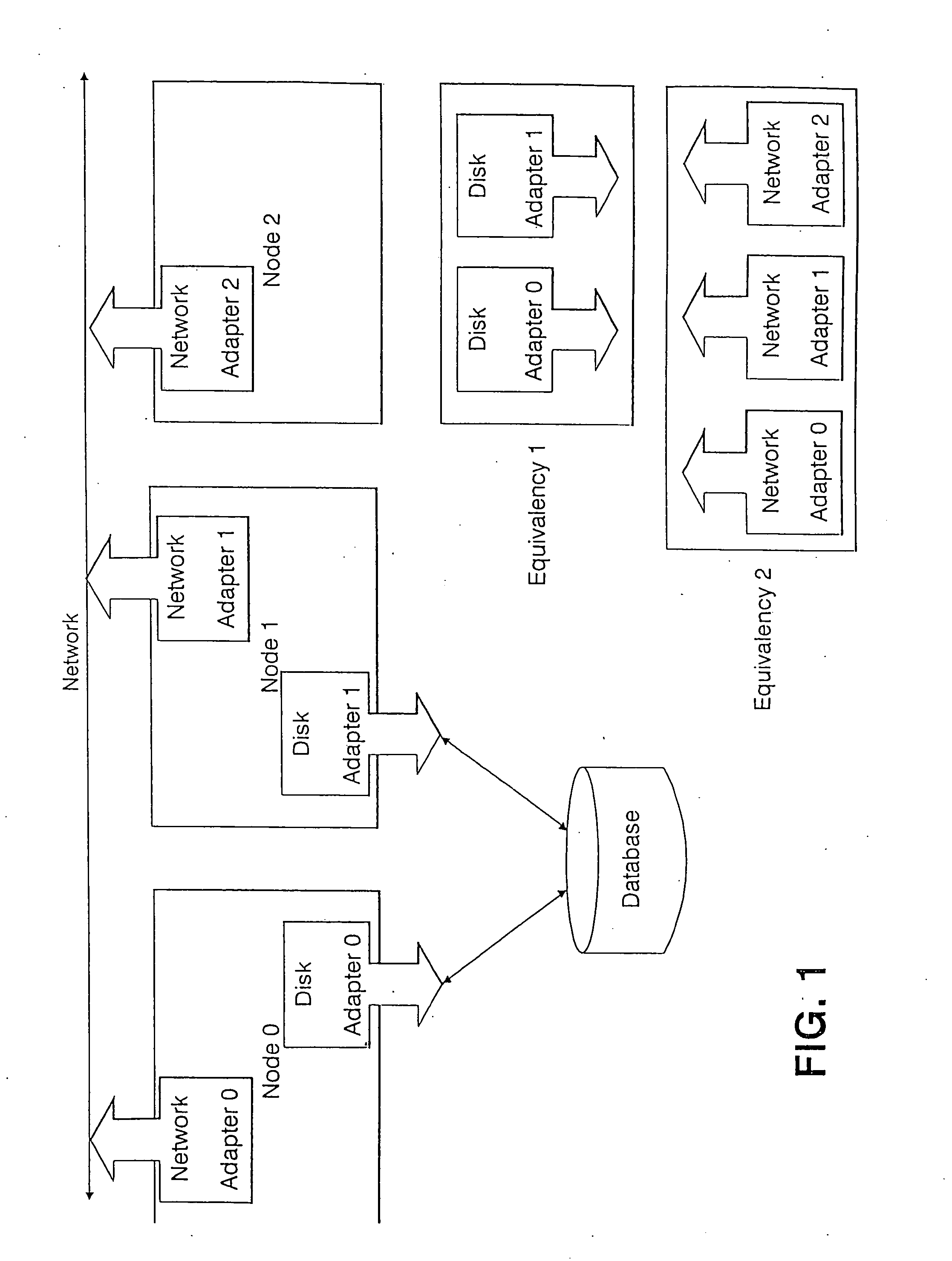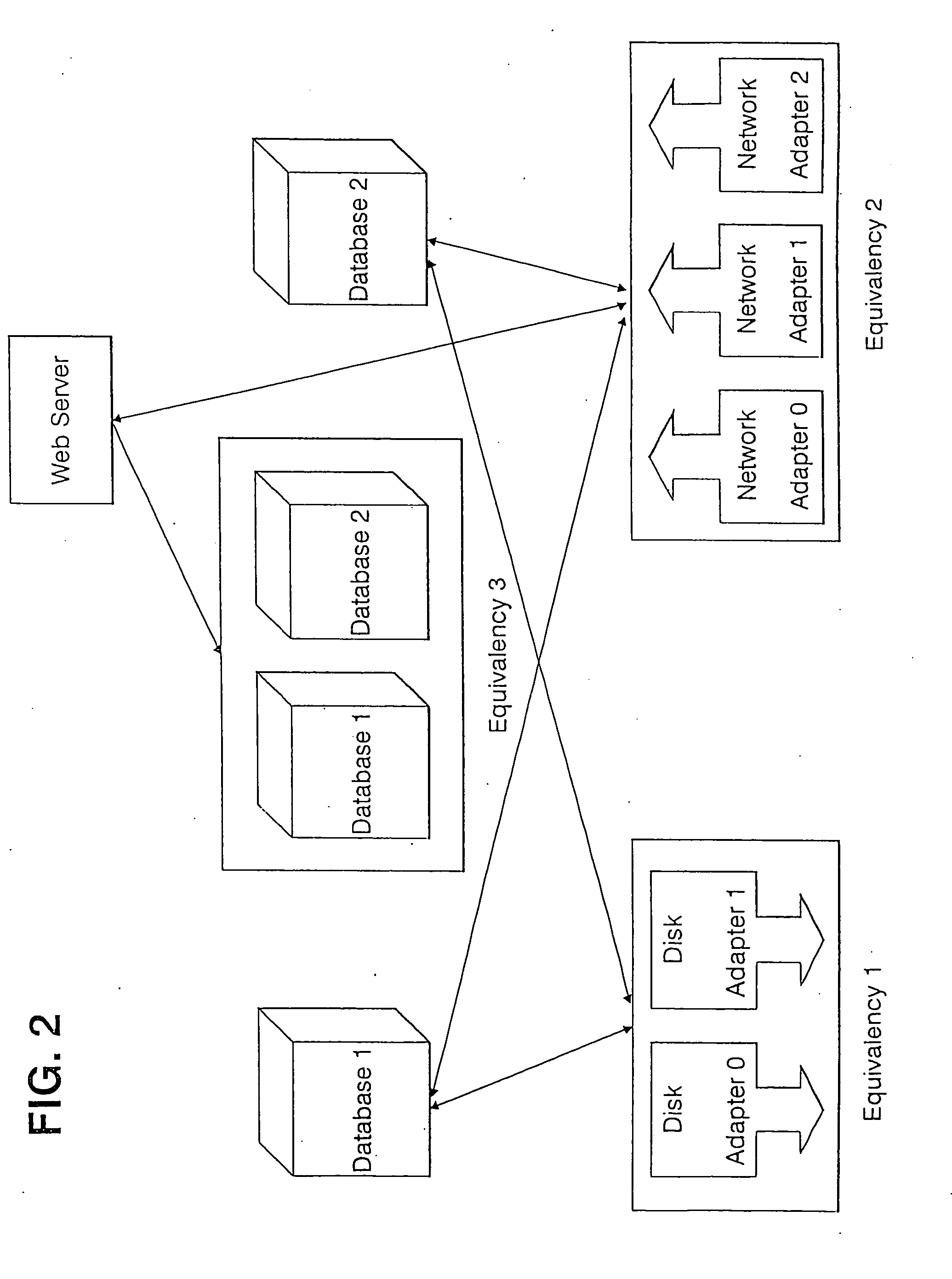Decision based system for managing distributed resources and modeling the global optimization problem
a distributed resource and decision-based technology, applied in the field of decision-based system management, can solve the problems of high human administrator bound cluster management, inability to adapt to any form of automation, high cost, etc., and achieve the effect of avoiding the need for manual adjustment, and reducing the complexity of manual adjustmen
- Summary
- Abstract
- Description
- Claims
- Application Information
AI Technical Summary
Benefits of technology
Problems solved by technology
Method used
Image
Examples
Embodiment Construction
Definitions and Basic Cluster Concepts
[0037]In a cluster managed by Mounties, hardware components such as nodes, adapters, memory, disks, and software components such as applications, database servers, web servers are all treated as cluster resources. When there is no ambiguity, we use the terms resource and the service it provides, interchangeably. A location is a unique place in the cluster where a resource or service physically resides and makes its service available. Typically it is identified by the node (or the processing element), but it could be any uniquely identifiable location (such as an URL). To provide its intended services, a resource may need services provided by one or more other resources. These are referred to as the dependencies. In addition to the dependencies, a resource may have other limitations and restrictions such as capacity (defined in the following) or location in the cluster where it can provide its services. Some of these may be because of the physica...
PUM
 Login to View More
Login to View More Abstract
Description
Claims
Application Information
 Login to View More
Login to View More - R&D
- Intellectual Property
- Life Sciences
- Materials
- Tech Scout
- Unparalleled Data Quality
- Higher Quality Content
- 60% Fewer Hallucinations
Browse by: Latest US Patents, China's latest patents, Technical Efficacy Thesaurus, Application Domain, Technology Topic, Popular Technical Reports.
© 2025 PatSnap. All rights reserved.Legal|Privacy policy|Modern Slavery Act Transparency Statement|Sitemap|About US| Contact US: help@patsnap.com



